
TechJunkie Expert Recommendations

There’s nothing better than diving into a rich, story-driven role-playing game. From PC classics like Fallout 2 or Baldur’s Gate, to modern masterpieces like The Witcher 3 or The Elder Scrolls V: Skyrim, there’s no shortage of challenging, engaging stories being told in gaming. Of course, not everyone wants to head to their local Best Buy to pick up a Nintendo Switch or a PS4 for gaming. Consoles are expensive investments after all, especially if you find yourself without the time to consistently play new releases. The cost of spending up to $500 on new consoles and their corresponding games and accessories is pretty high, especially if all you’re looking for in a game is something to pick up and play on the subway headed to work, or when you’re laying in bed after a long day.
Fortunately, mobile gaming is perfect for those kinds of experiences. While many mobile RPGs might not always offer the same level of depth as their console counterparts, you can find plenty of fun to be had for a fraction of the cost. The Play Store is filled with RPGs promising action, adventure, and unique battle systems, but not every game deserves your time and attention. If you’re looking for some of the best RPGs Android has to offer, you’ve come to the right place. I’ve ranked ten of my favorite RPGs below in alphabetical order, so whether you’re looking for a fantasy epic, tactical battles, or ports of classic RPGs from yesteryear, you’ll find something to love in this roundup.
Updated in August 2019 with the release of Battle Chasers: Nightwar.
Compatible With



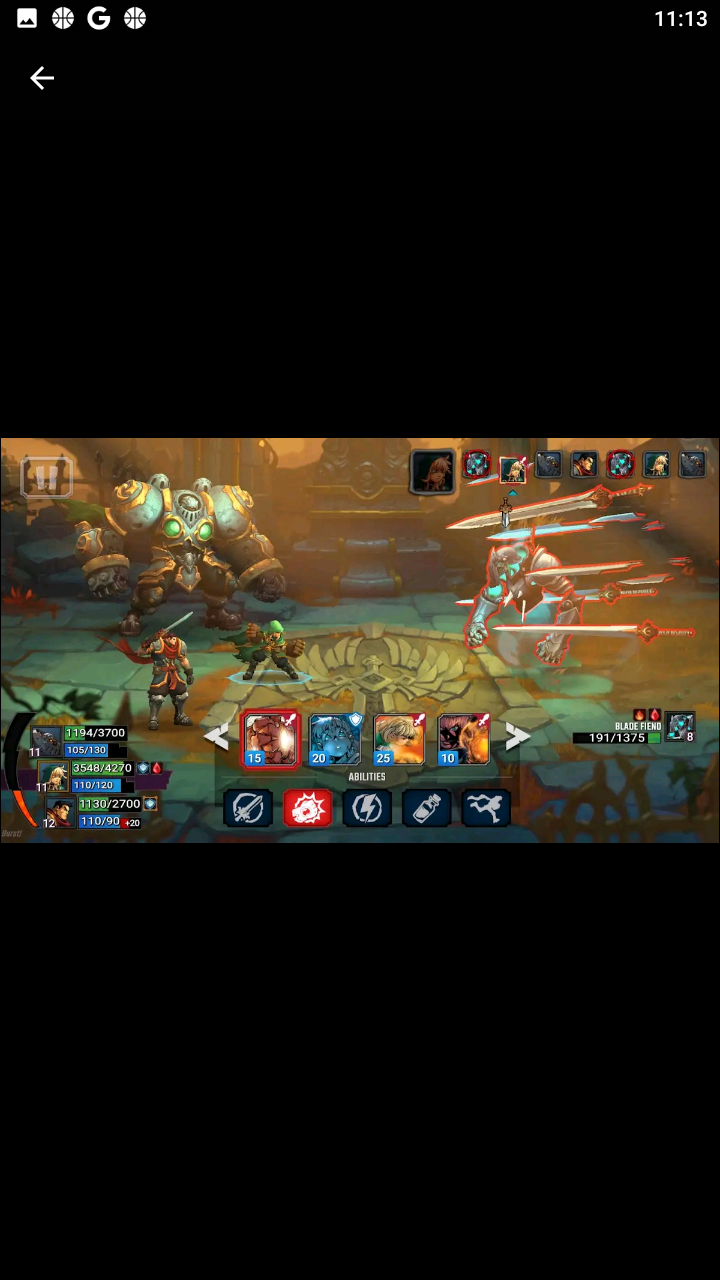
It’s not often that modern console games are ported to mobile devices, but when it does happen, it’s always worth checking out. Battle Chasers: Nightwar is no different, and it’s exciting to see a game as fantastic as this one make its way to Android at a reasonable cost. Battle Chasers is based on Joe Madureira’s comic series of the same name, and was developed by Madureira’s new studio, Airship Syndicate. Built as a traditional JRPG set in the fantasy world from the comics, Battle Chasers: Nightwar is the perfect game for fans of old-school turn-based RPGs from the 1990s. At $9.99, it isn’t the cheapest game on this list, but that’s without ads, in-app purchases, or anything else that will get in the way of your adventure.

(Screenshots were captured using the Nintendo Switch version of the game.)
Anyone who followed indie comics in the 1990s will immediately be familiar with the characters of Battle Chasers. This is very much set in the same universe, and Garrison, Gully, Calibreto, and Knolan all make appearances. For those who haven’t been introduced to Madureia’s universe, you still might recognize some of the character designs. After his run with Battle Chasers concluded in the early 2000s, the artist went on to become the art director of Darksiders, a Zelda-like game set in the aftermath of the apocalypse. Madureia’s artwork isn’t the only thing Battle Chasers shares with Darksiders: Airship Syndicate is made up of devs from the now-defunct Vigil Games, the studio behind Darksiders and Darksiders 2.

Like many RPGs from the SNES-era it draws from, the game’s plot is a bit shallow, but there’s enough there to keep you rolling through combat and dungeon exploration. Battle Chasers follows Garrison, Gully, Calibreto, and Knolan travelling on an airship at the beginning of the game , when the ship is shot down over a mysterious island. Trapped without a way to repair the ship, they’re forced to fight against incoming hordes of thugs and monsters, all attracted to the island thanks to the discovery of a surplus of mana, the source of all magic in the world. As our heroes make their way through the island, they find themselves threatened by an evil sorceress named Destra.
Battle Chasers combines the gameplay of two unique genres into one slick package. From moving around the world map to exploring dungeons and other levels, you’ll find yourself in an isometric landscape. On the world map, you’ll encounter stationary enemies as you move from area to area, while dungeons contain enemies that can move around the world. Each dungeon is reminiscent of something like Diablo, with hidden secrets and loot around each corner. You move a single character around the stage at each time, but swapping between characters allows you to access their special abilities as you move.
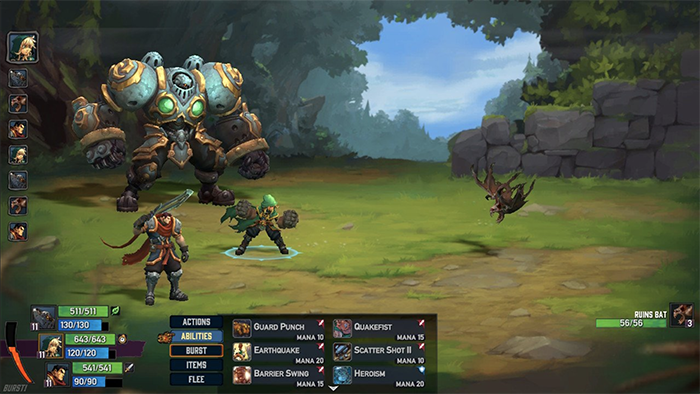
Meanwhile, the battle system in Battle Chasers is standard JRPG turn-based fare. You control up to three characters as they attack, defend, and heal, while up to three enemies attack you from the opposite side of the arena. Each character has basic attacks, along with abilities that require a certain amount of magic or health to use. As you level up, you gain new abilities and increase your stats. It’s all very standard JRPG fare, but it’s one of the best implementations I’ve seen from this style of gameplay in a long time. The battle system also makes use of a unique mechanic, “overcharge,” which is generated by using standard attacks. Overcharge grants you additional magic usage, which means you’ll need to balance your normal attacks with your magic abilities to keep your fighters going.
Though originally for consoles and PC, Battle Chasers looks absolutely stunning on mobile devices. There are sliders available in the settings menu that allow you to adjust the graphics on your phone, but if anything, you’ll have to bring them down, not up. Even a Pixel 2 XL, a device that came out less than two years ago, is barely able to qualify as hardware capable of running the game. Without much in the way of serious real-time action, Battle Chasers shines on touchscreen devices. The virtual controls are good-enough for moving through the world, but when it comes time to battle, selecting your moves or items just feels right.

Battle Chasers won’t be able to satisfy the needs of every gamer, but for those looking to capture the feel of old-school JRPGs while heading in a new direction in terms of worldbuilding, art style, and exploration. Development team Airship Syndicate made a fantastic throwback RPG here that manages to (mostly) avoid the pitfalls of other retro-inspired games, and at $10 for a complete 30-40 hour game, it’s well worth the asking price. And hey, Airship Syndicate is using their experience with the Diablo-inspired dungeons for good use, with a Darksiders spin-off entitled Darksiders Genesis coming later this year.
Compatible With
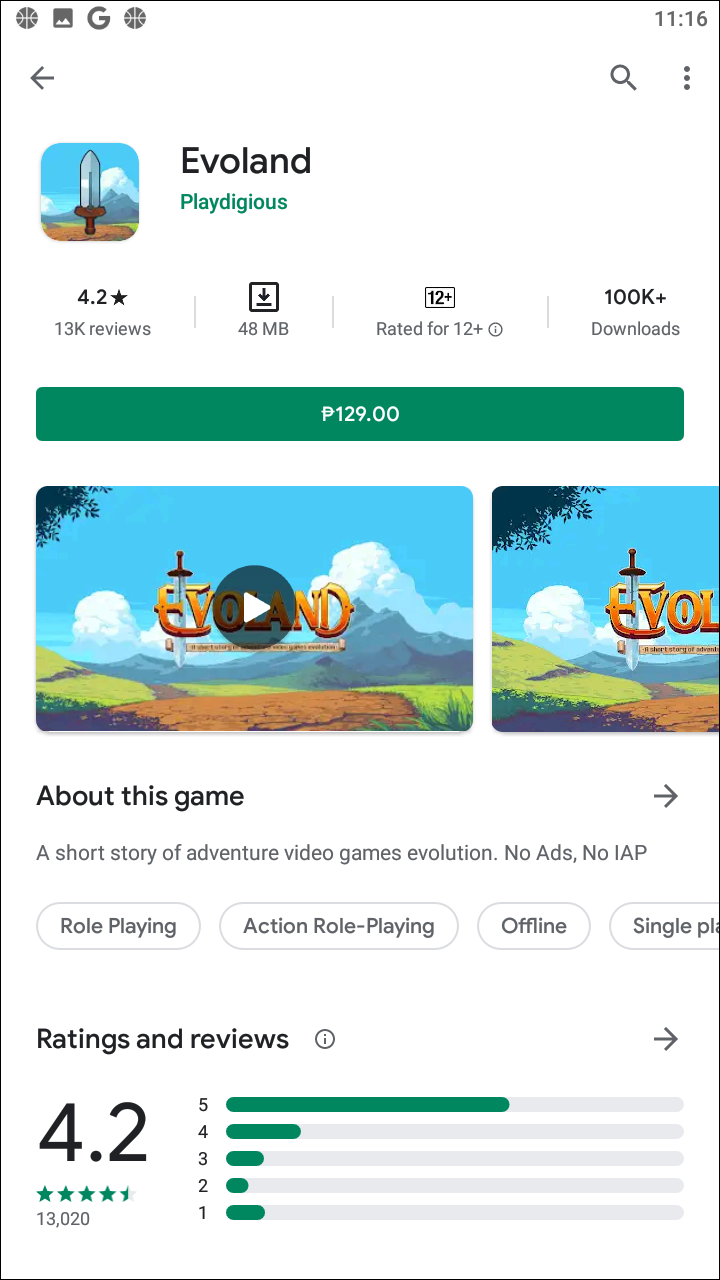
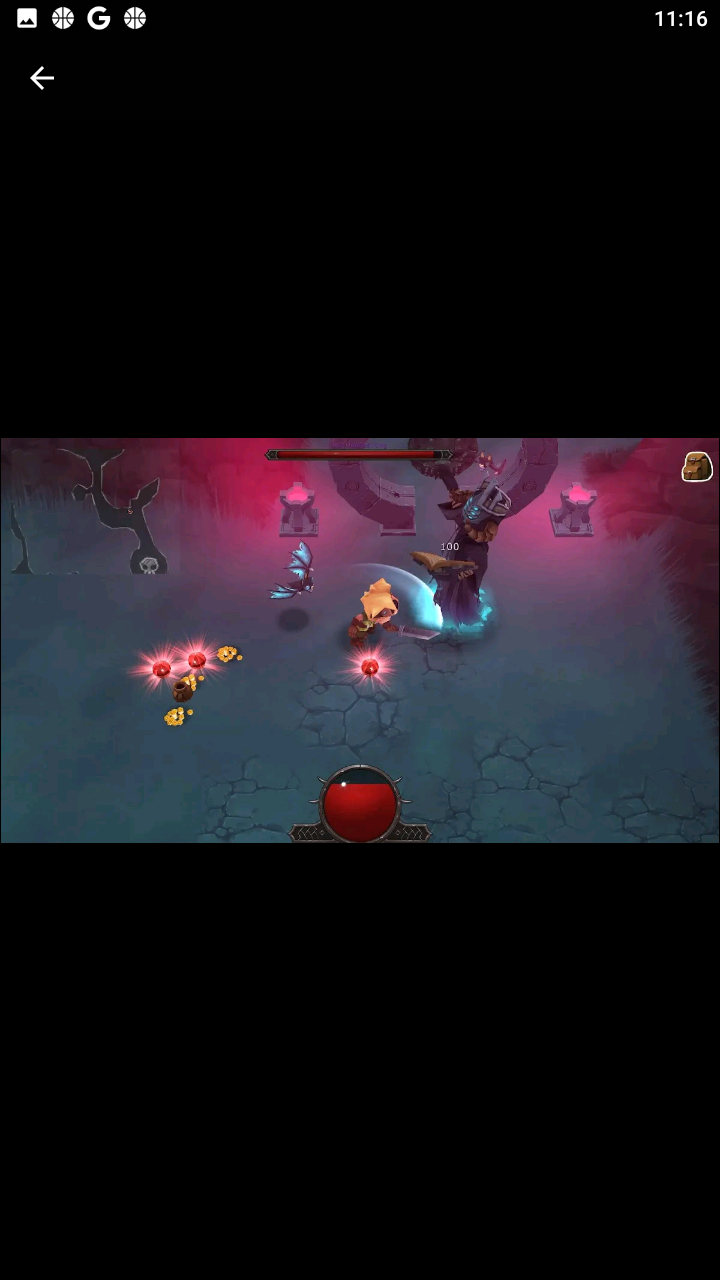

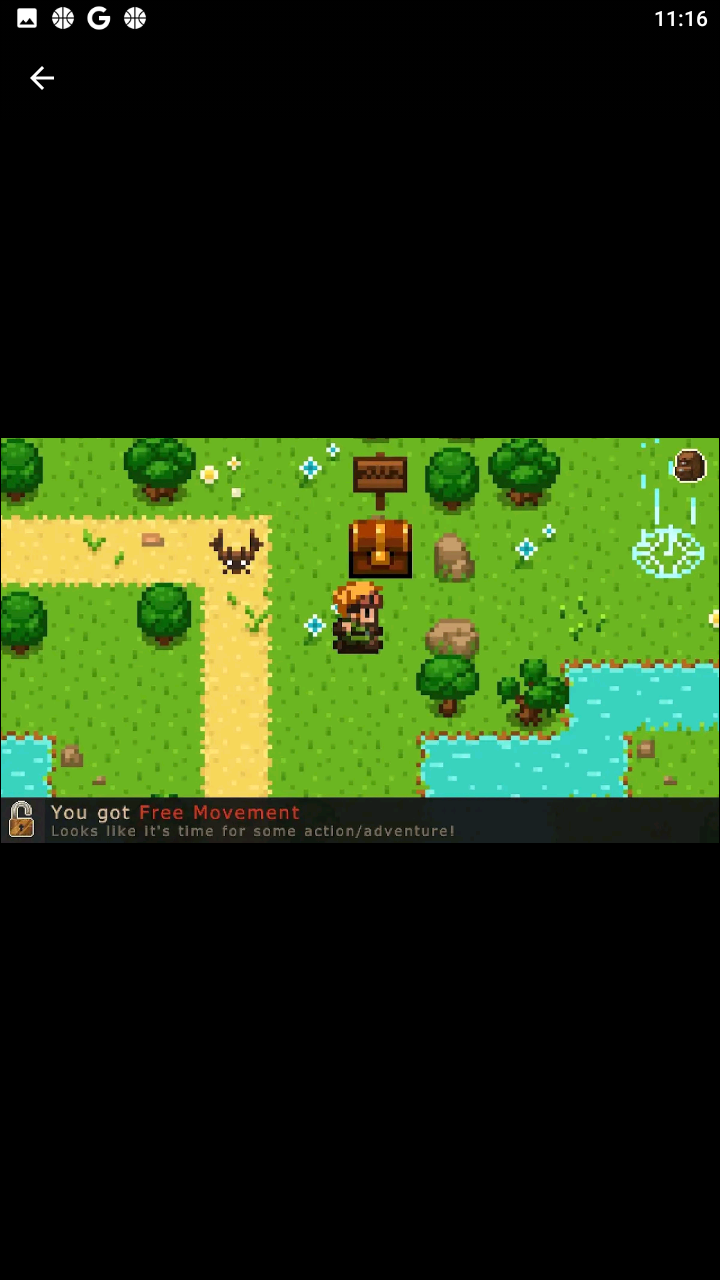
At first glance, Evoland may seem like yet another easy cash-in, working off the backs of successful pixel-art titles released over the last decade. Though the game might not be anything groundbreaking in terms of video games, mobile or otherwise, it’s impossible to ignore what makes this game so great. Unlike other pixel-based games you can grab from Google Play, Evoland isn’t just about following an unoriginal adventure and a silent protagonist. Evoland is about the evolution of RPGs in general, from simple 8-bit sprites all the way to current day three-dimensional graphics. And while there are certainly some gripes to be had with some of the game’s mechanics, Evoland knows what it is, and more than anything, that is a victory for the game itself.

Evoland opens with your character displayed in classic, black and white 8-bit graphics. In a lot of ways, the first few moments of this game look exactly like The Legend of Zelda: Link’s Adventure for the original Game Boy, with a young boy set as the protagonist. The world is surrounded in black, except for the areas to your left and right, displaying two chests. As you begin to move around the world, you build out the abilities you have in the game, earning notifications for your unlocks.
The earliest parts of this game limit you to moving around the world, finding chests and unlocking not just new abilities, but new effects as well. For example, the game is played completely silent until you find a chest containing “Sound FX,” which input some standard footsteps and other noises into the world around you (the music for the game comes later, locked in a separate chest). Camera movement, weapons, and even enemies are all unlocked in the first few minutes of playing the game, as you use the chests to effectively build the world around you.
Eventually, upon upgrading your graphics, adding color, and learning the basics of the game, you finally unlock the “story” of Evoland, which is told with a basic title crawl and is effectively functions as an excuse to create some form of gameplay over unlocking additional chests. The game pokes fun at the weak excuse for a story with its notification, but that doesn’t quite erase the disappointing story from still existing. You can do meta-narratives correctly, but here, the story fumbles along in the background.
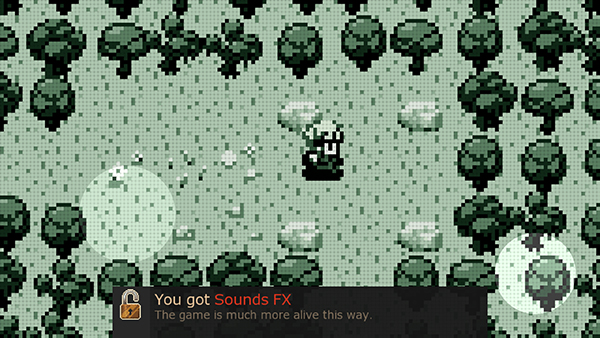
The first twenty or thirty minutes of this game feel as fresh as anything I’ve seen on the Play Store previously. Hidden references and nods to moments in gaming history, like the SNES’s Mode 7 map, expand the game in ways you don’t see coming. The first few moments of the game feel nearly identical to classic Zelda games. with a focus on sword-based combat using an action button. Once you unlock an overworld, however, combat changes into a turn-based RPG system coming straight out of SNES-based Final Fantasy games. Random encounters are added, and though the game retains some of its traditional combat when you’re in a village, town, or cave, the turn-based system feels so much better that you’ll inevitably wish the whole game utilized that combat style. Some other references, including adult townsfolk that won’t talk to you while you’re a child, or locked areas until you upgrade your equipment, do a fantastic job in making this feel like the 90s games it’s emulating without going too over the top.
Evoland isn’t without some flaws, both technical and mechanical, and several of those problems relate back to the controls. Though you unlock a circle pad over your D-pad within the first few moments of the game, moving your character in this game never feels fantastic. Because you’re moving your character over a grid-based system for much of the game, but your character can move in 360 degrees, it’s easy to get caught on elements of the environments, like rocks and trees. Despite playing through much of the game, I never improved at navigating through the world without some issue, and this also translated into problems with the combat. Getting hit by an enemy in Evoland is a one-hit kill, booting you back to the main menu, and since it’s easy to accidentally walk into an enemy, deaths can often feel unfair or cheap.

The problems with Evoland’s controls don’t stop there, though. I ran into multiple glitches during my playthrough, whether from switching apps, turning off my phone’s display, or even just from taking a screenshot caused the game to glitch, reverting the circle pad bad to a locked D-pad. The only way to fix the game was to find a save point, save the game, then reboot our file. This happened several times during our playthrough, and while it’s an easy fix, it’s still frustrating to reply to a text message and find your game glitching out. It’s also worth noting the game doesn’t seem to support any amount of physical controls. No matter what I tried, using a Bluetooth controller with Evoland seems to be a no-go, a strange omission since the game was originally released on PC in 2013.
Problems aside, Evoland is an excellent addition to RPGs on Android. Unlike so many mobile games before it, Evoland seems to understand the history of classic games like Zelda and Final Fantasy at a core level, including wink-nudge references and in-jokes that give the game a distinct sense of humor. Though a bit pricey at $4.99 on the Play Store, as a crash course in classic game history and as a quality RPG on its own, Evoland is worth picking up. The game begins to slow down a bit in the latter half of the game, as unlocks and upgrades become more rare and the game refocuses its attention on the plot. Despite some missteps with its story and control system, Evoland is a great game for the classic gamer in all of us.
Compatible With
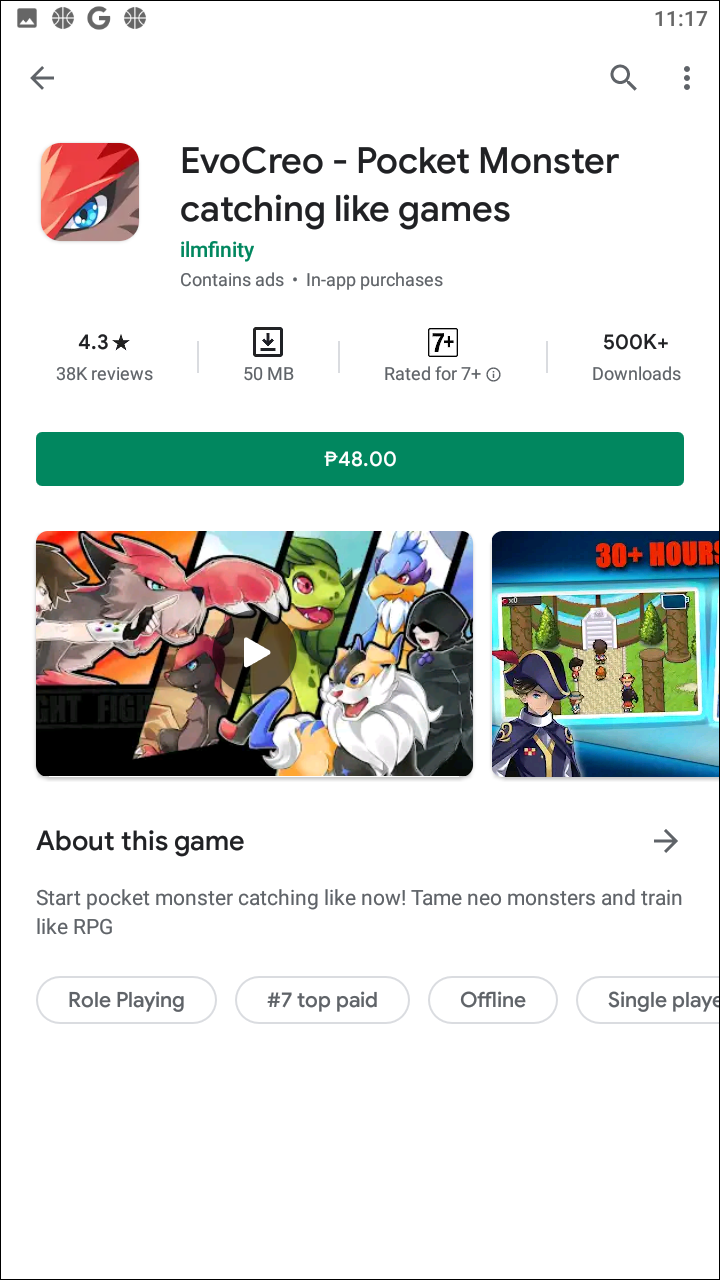

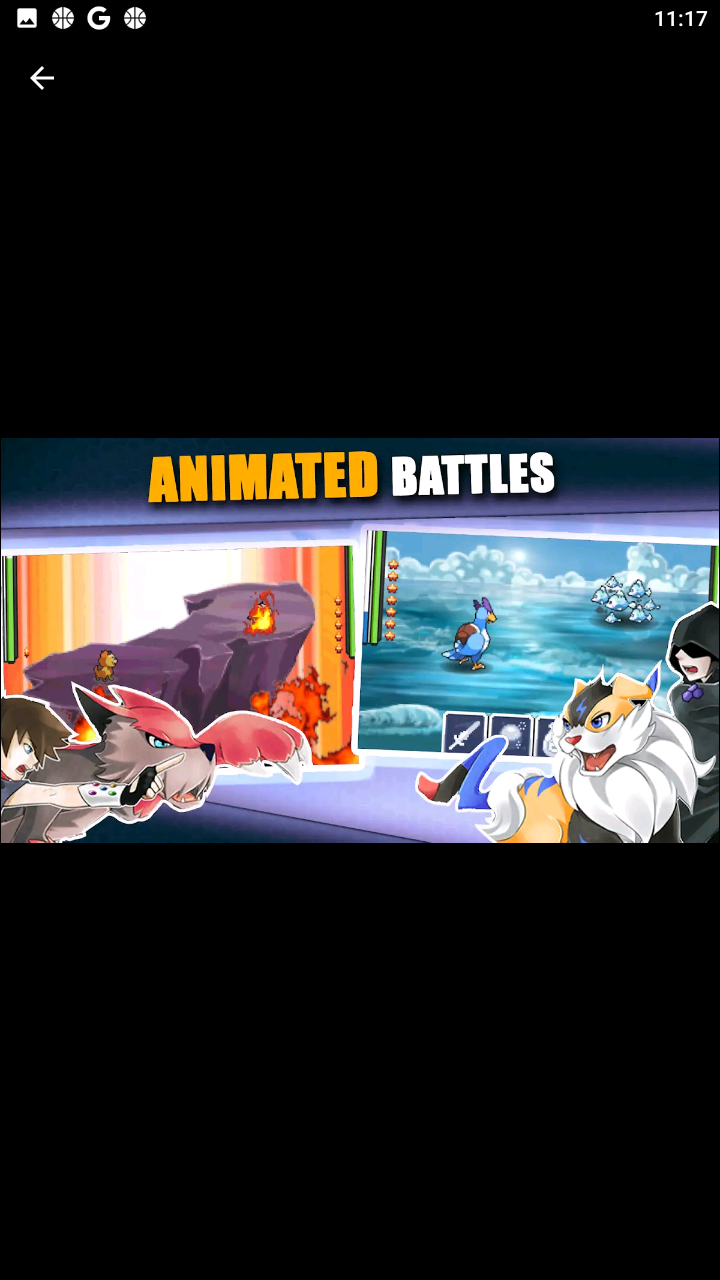

At this point, there’s no shortage of Pokemon games available for Android users. Everyone knows about Pokemon Go, of course, which still features a large player base around the world. There’s Pokemon Duel, the strategy board game title that has achieved over thirty million players worldwide, and Pokemon Trading Card Game Online, which lets you collect digital versions of your favorite cards to duel online. Lesser-known games like Camp Pokemon, Pokemon Mobile Shuffle, and Pokemon Playhouse also exist, offering younger audiences the chance to get in on the Pokemon fun. And of course, there’s also Magikarp Jump, an oddly-specific game where you raise your own custom Magikarp to be as big and powerful as possible.
None of these games come close to replicating the experience of playing Pokemon on your Nintendo Switch or 3DS. In the past, games like Pocket Mortys have done an excellent job of recreating a Pokemon-style game on Android for fans of their licensed material, but nothing has truly managed to capture the experience of playing, say, Pokemon Ruby or Sapphire for the first time. Even Pokemon Go, which continues to add features like trading and battling, doesn’t quite fulfill the true Pokemon experience. Thankfully, EvoCreo goes a long way in satisfying

EvoCreo was started as a Kickstarter project back in 2012, where it raised $2683 with a $2000 pledge goal. The game was originally announced for Android, with later releases on iOS and PC, though it does appear that the game only ever arrived on mobile platforms (along with the ill-fated Ouya home console). As expected, EvoCreo isn’t the only mobile title trying to capture some of that original Pokemon magic on mobile devices, though it is one of the few RPGs that tries to match the visual look of the series as closely as possible. Anyone familiar with Pokemon’s third-generation of games will feel instantly at home here, as the 16-bit graphics seem directly inspired by Pokemon Ruby, Sapphire, and Emerald (with a bit of the fourth generation thrown in as well, as EvoCreo seems to treat the games with a bit more respect for how buildings work in terms of depth).
When you start the game (available in a Lite version that acts as a demo to introduce you to the game, and a Full version available for 99 cents), you’ll be greeted by—no joke—one of my favorite mobile menu displays of all time. Half Kingdom Hearts, half Pokemon, the game invites a sense of adventure that really sets you up to jump into what awaits. The beginning moments of EvoCreo set up a similar situation to every Pokemon game imaginable. You’re asked your gender, your name, and also asked to name your sibling, similar to how you name your rival in the earlier Pokemon games. You’re given a task that will take you throughout the entire world of Zenith, and asked to choose a Creo (essentially, a Pokemon) to start your journey with, one of three. After jumping through a couple hoops and speaking with your mother, you’re allows to venture off into the region with your brand new Creo pal by your side, ready to start an adventure.

The experience of EvoCreo isn’t identical to Pokemon, however. There are some key differences between the two that make EvoCreo feel like its own thing without feeling too much like a copy of the original series. The biggest changes come from the starter Creos, which wisely choose to forego the traditional experience of selecting a water, fire, or grass type in exchange for creatures with different stats. Each Creo you can choose from has a personality type that matches its stats, which you can view in number form once you’ve selected your travel companion. Each creo has five stat categories: Vitality, Attack, Special Attack, Defense, and Speed, almost mirroring the Pokemon games (which add Special Defense). I chose Furen as my starting Creo, which offered an even split between all starting stats in the game. A few other minor changes: you gain your starting Creo from a farm, not a professor in a lab; your mission depends on you finding your father, a possible reference to the missing father from most Pokemon games; you can only carry up to five Creos at a time; and the starting area, which is a large city instead of the traditional small town.
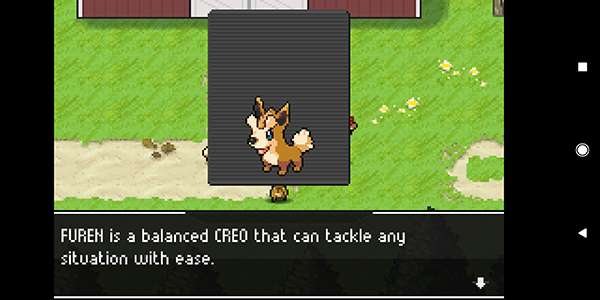
In terms of gameplay, there’s two main elements to touch on. Most of the game is spent moving around the world using one of three options for movement. I spent most of my time in the game trying out the virtual D-Pad, which is located by default in the lower-left hand corner of the screen, and it worked about as well as you’d expect—lots of missed clicks and unread button presses, which made moving around the world more difficult than it would be in, say, a traditional Pokemon game. You can also select the ability to use a virtual analogue stick and the option to touch on the screen where you want to move and interact with. Overall, all three of these options were lacking in some meaningful way, but it wasn’t a dealbreaker. What was worse, however, was the lack of any controller support.

When you aren’t moving around the overworld, you’ll be spending your time in battle. Unsurprisingly, the battle system here feels like a simplified version of what we’ve seen in past Pokemon games. Your battle options are along the bottom of the display, and you can select one of five abilities learned by your Creo. You’ll find wild Creo in the tall grass as you walk through the world, and you have items in your bag that can capture up to five Creo to use as your own. There are some changes to how the battle and level system works. For example, your party levels up all at once, similar to how EXP Share works in Pokemon. Creos each have three normal moves, a healing move, and an “elite” move that is more powerful than the rest. Some additional changes, like boons and interchangable traits, help to make some changes compared to Pokemon.
Honestly, there’s s much more we could touch on with EvoCreo, but the bottom line is simple: this is a capable take on making a mobile spin-off for Pokemon, something we’ve been anticipating for a long time. While the game doesn’t quite have the same level of polish that generations of Pokemon games have led to, there’s a lot to love here. Outside of some issues with the controls, EvoCreo is an incredible mobile RPG that gives twenty-somethings with a love of Pokemon and a feeling of nostalgia for the series something to play while on the way to work. For $.99, you can’t go wrong with picking up this game, especially if you’re looking for an involving RPG with a solid battle system and hours on hours of gameplay.
Compatible With


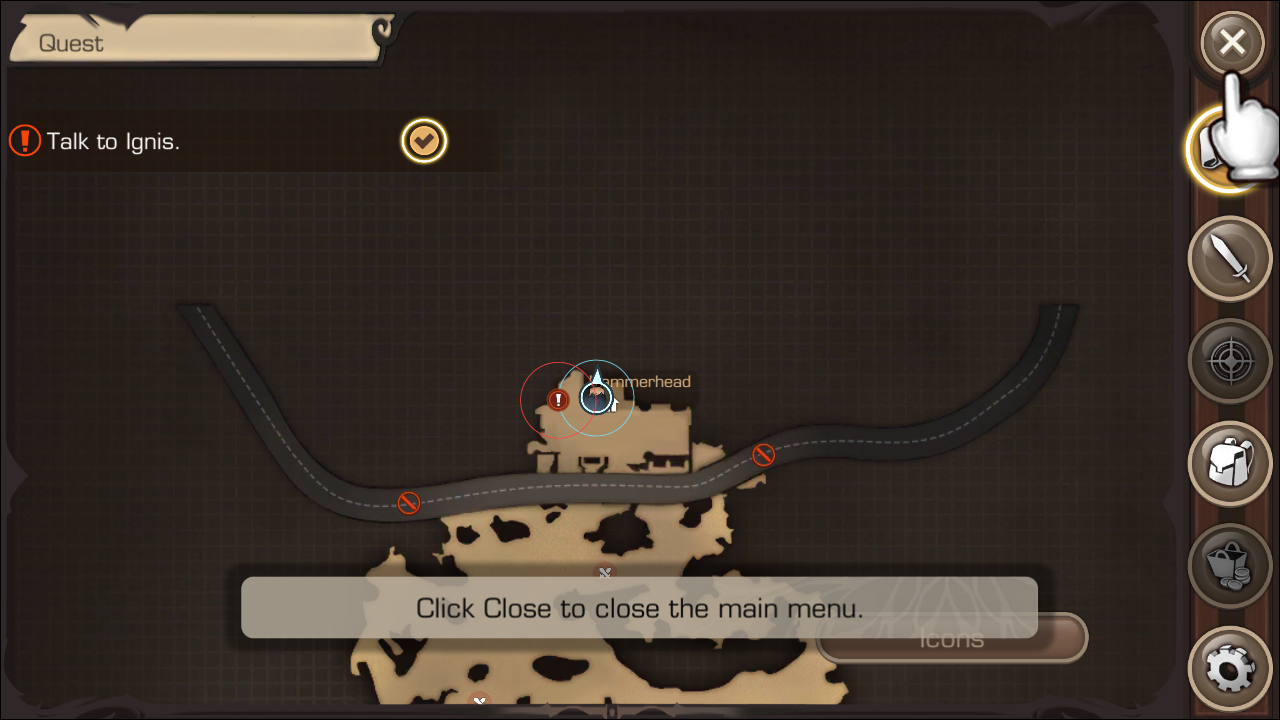

Prior to 2018, there were two types of Final Fantasy games on mobile platforms. There were re-releases of classic games on the Play Store, which utilized the touchscreen on your phone to redesign how the game was played. Games like Final Fantasy IV, Final Fantasy VI, Final Fantasy VII, and spin-off games like Final Fantasy Tactics: The War of the Lions all managed to recreate the experience of playing full-length console RPGs on your smartphone, occasionally being released with added content or reworked sprites and graphics. Those games, of course, cost quite a bit on the Play Store, ranging from $7.99 for the original Final Fantasy to $20.99 for Final Fantasy IX, the final game in the series released on the original Sony Playstation. These aren’t cheap, especially for the older NES games that haven’t aged nearly as well (Square Enix’s other fantasy-based RPG series, Dragon Quest, sells its first entry for only $2.99, a much cheaper asking price).
For those looking for some style of RPG fantasy-action, without dropping real cash on a smartphone app, Square Enix also offers a wide variety of free to play Final Fantasy games, the quality of which range from okay to excellent. Mobius Final Fantasy, which I reviewed above, is a Final Fantasy XIII-esque title that has done a solid job of filling the gap for those hoping for PS2 and Ps3-era Final Fantasy-style games on the go, though as pointed out above, the game has its fair share of flaws. Games like Brave Exvius, meanwhile, have millions of fans around the world and allow for some semblance of turn-based action and combat on the go. These games, of course, have always been seen more as a distraction than a true RPG experience, and it’s left a fairly wide divide in the community. Either pay up for your classic roleplaying games, or be relegated to the free-to-play market.

Final Fantasy XV Pocket Edition is really the first game we’ve seen from a major publisher that tries to find a way to please everyone. It’s a demake (a remake of a modern game for less-capable hardware) of Final Fantasy XV, the most recent addition to the long-running series and currently offered on the PS4, Xbox One, and scheduled to be released in March on PC. Final Fantasy XV was well-received upon release in in 2016, and the constant stream of updates and DLC from Square Enix has only made it a better game. Still, it’s obvious that the graphics alone would make the game infeasible to run on a smartphone or tablet. That’s where Pocket Edition comes in, streamlining the game, removing additional storylines that aren’t necessary to tell the tale of Noctis and his friends, and simplifying the combat and movement so that it works on a mobile device. Oh, and as mentioned, recreating the art style and graphics to something a mobile device can handle.
Pocket Edition proves that a full-fledged, current-gen console game can be remade and turned into a mobile game as long as the development team behind the app has dedication. Outside of those changes mentioned above, Pocket Edition gives players a full Final Fantasy experience right on their phones. Players who have journeyed through the world of Final Fantasy XV will likely find the journey through Pocket Edition to be familiar. Just as we saw with the original title, Pocket Edition opens on the flash-forward through time, showing Noctis and his friends in a time of peril, before flashing back to the quest given to Noctis by his father. Despite the downgraded graphics, the voice acting is still here, and still fantastic. Anyone who has spent time in the world of Final Fantasy XV will find themselves right at home.
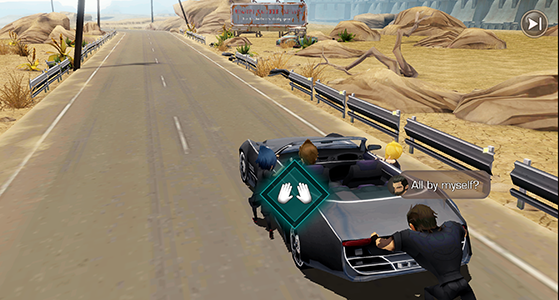
Once you accept you the first quest, The Pauper Prince (identical to the first quest in the original game), you’ll venture off into the desert world outside the small pit stop by mechanic Cindy, in order to make some cash. The combat system, like the graphics, have been simplified. You move around the map by tapping on areas on the ground, or by sliding your finger around the screen. To attack a beast, you click on the enemy and Noctis will begin auto-attacking, though you gain special abilities as you level up that are activated with the tap of a button. The combat doesn’t feel quite as good as its older, console-based brother, but for a mobile game, it’s actually not too bad. You can still use the signature warping ability around the map to attack enemies, and the isometric camera angle makes FFXV Pocket Edition feel more like a retro-ized Final Fantasy game than the original did. Plus, there’s still cooking, tons of snarky dialogue between the four friends, collectables hidden throughout towns, and more additions from the original game to help more hardcore players get into the friendlier, more casual title. +

One specific aspect of the game worth noting is the quality settings that can be customized from the start. This includes adjusting the graphics settings to improve or lower the graphics quality of the title (allowing the game to run on lower-end hardware without issues) and, best of all, adjusting the frame rate. Final Fantasy XV Pocket Edition runs at 30 frames per second by default, but can be adjusted to run at 45 or 60FPS, making it one of the few mobile titles of this quality to feature the ability to change your the frame rate on your phone. I imagine that, on a device like the Razer Phone, with its high-refresh display, the game would look even more incredible, and as that display technology begins to roll out to more devices in the future, Pocket Edition will be one of the first titles to truly take advantage of that tech.
Perhaps most surprising, however, is how much Final Fantasy XV Pocket Edition gets right on its pricing structure. As we mentioned above, Square Enix has a habit of offering high-priced ports of their older titles and free to play games that are often bogged down by ads and in-app purchases. Pocket Edition, however, gives players the first of ten chapters for free, without ads or limitations. The second and third chapters cost $.99, while the remaining chapters are $3.99 each. The entire package can also be bought for just one payment of $19.99, which means players who decide after the first chapter to grab the rest of the game can save some cash, while players who want to try out a little more before they drop some serious coin aren’t penalized with the $3.99 asking price.
Honestly, Square Enix nailed every single aspect of the game, from its demake of the original, high-fidelity graphics, to choosing which missions to cut out in order to streamline the FFXV experience, to the pricing structure and the ability to adjust the graphics output, everything here just gels. This is a mobile port done right, and I’m hoping that future mobile games—cough, Mario Kart Tour—will follow its lead.
Compatible With
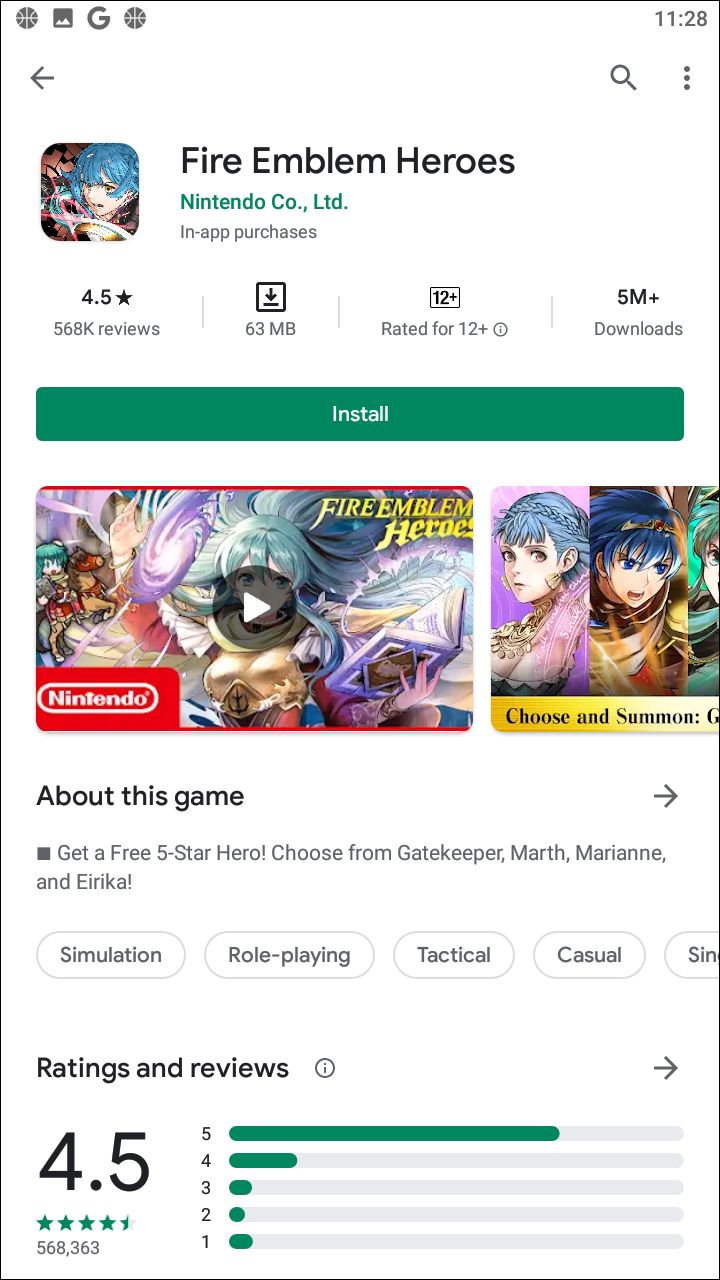



Nintendo has slowly been moving into mobile games, first with the social-lite title Miitomo and then with Super Mario Run, a premium title that cost $10 after the first handful of levels. Neither game was received particularly well, so imagine the surprise of most players when Fire Emblem Heroes arrived on the Play Store ibn 2017 and wasn’t just good—it was a fantastic adaptation, taking what worked in the series’ most recent releases, Awakening and Fates, and condensing that content down to a playable and fair free-to-play mobile game. Though Heroes isn’t without its flaws, most of the gaming audience found that Nintendo, DeNA, and Intelligent Systems (the developers behind the mainline Fire Emblem series) has created something faithful to the series’ most hardcore audience.
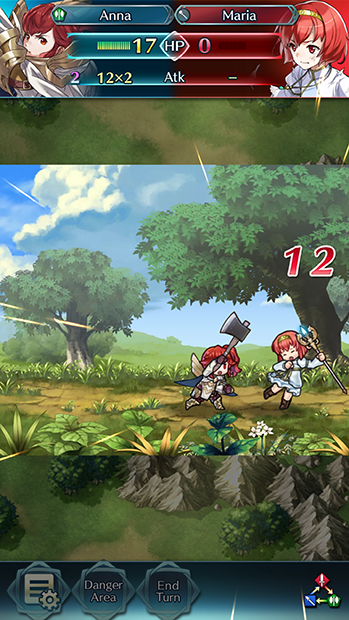
Heroes‘ main gimmick outside combat is allowing you to gather fighters from any Fire Emblem game from the series’ nearly three decades of releases, including characters from games than never made it over to western shores, as well as three new fighters exclusive to Heroes. Using orbs, the in-game currency of Heroes, you summon heroes using the in-game gacha system. Gacha is named after Japanese GashaPon games where you insert money to receive a plastic egg containing a prize—similar to those quarter machines you’ll find in supermarkets in the US, but on a larger scale. You use your orbs, which you can either buy with real cash or earn by playing the game, to summon characters randomly at five orbs per character.
If you summon multiple characters at once, you save on orbs per character (using three or four orbs to summon a new warrior instead of five), so it’s rewarding to save your orbs until you reach a certain amount to cash in all at once. This may sound sketchy, but truly, the game hands out orbs for nearly every action. Did you log in today? Orb. Complete a mission? Orb. Complete a side-quest like defeating a certain amount of enemies? Here’s a bunch of orbs. You can make them up pretty fast, and it’s easy to avoid spending money as long as you have patience.
But what if you’re new to the Fire Emblem series? What exactly is the main gameplay mechanic surrounding combat and battles? And is this a good place to start as a new player? Not only is Fire Emblem Heroes pretty fun, it’s a surprisingly confident and faithful port of the series. Traditionally, Fire Emblem is a tactical-RPG, so you command an army of warriors and soldiers around a battlefield, battling enemies for both missions and experience. Largely, the core gameplay works the same as it does in Nintendo’s mainstream releases, but simplified and ported down to fit on a mobile device. If you’ve played Fire Emblem games before, don’t be dismayed—this isn’t bad. In fact, it allows the game to be played easily with one hand, as you slide and tap your units across an 8×6 battlefield. You don’t combine units, as in traditional games, but you can use other characters to raise their defense. Likewise, there’s no item or weapon selection, but some characters have multiple attacks that must charge before they can be used on their enemies.

Here’s the basic idea of how combat works: each of your characters have an attribute, like swords, battle axes, or lances. Each of these is strong against one type, but weak to another. It’s like chess crossed with rock-paper-scissors. A sword fighter, for example, will do greater damage to ax-wielders, but will take extra damage from those with lances. Don’t worry if you have a difficult time remembering these stats—a helpful diagram showing the battle triangle will always be in the bottom corner of your screen. There are a few other battle types, like bows or flyers, but largely, this is the key to winning battles. Build your teams and arrange your fighters in a way that benefits you, fight your enemy, and overcome them.
For those of you familiar with the console and handheld Fire Emblem games, you’ll want to know a few changes: namely, the lack of permadeath and the lack of relationships, a key feature in both Awakening and Fates. Unfortunately, the game is a mobile adaptation of the mainline game series; it is a bit more shallow than those $40 thirty-to-fifty hour long games. Meanwhile, the stamina system makes things a bit more complicated. Nearly every action in Heroes requires some use of stamina, a constantly regenerating resource that depends on either time and patience or actual cash to regain. You do start with 99 stamina points—up from fifty when the game first launched—but if you run out, you’ll have to wait while your stamina rebuilds. The good news: you shouldn’t have any problems with gaining stamina overnight, and the system itself has improved since launch. It’s not perfect, but for a free to play game, it could’ve been much worse.
Overall, Fire Emblem Heroes is a great game that will have greater meaning to long-time Fire Emblem fans, but is also accessible and easy enough for new players to pick up and learn. I had a great time playing through the early game missions, and I’m excited to try out the multiplayer battles once my team improves. The game has come a long way in the last two years, and if you’re interested in diving into a great SRPG experience, it can be a really good If you’re looking for a great free to play game for Android that combines a familiar game series with great tactical-RPG elements, Fire Emblem Heroes is an excellent selection.
Compatible With
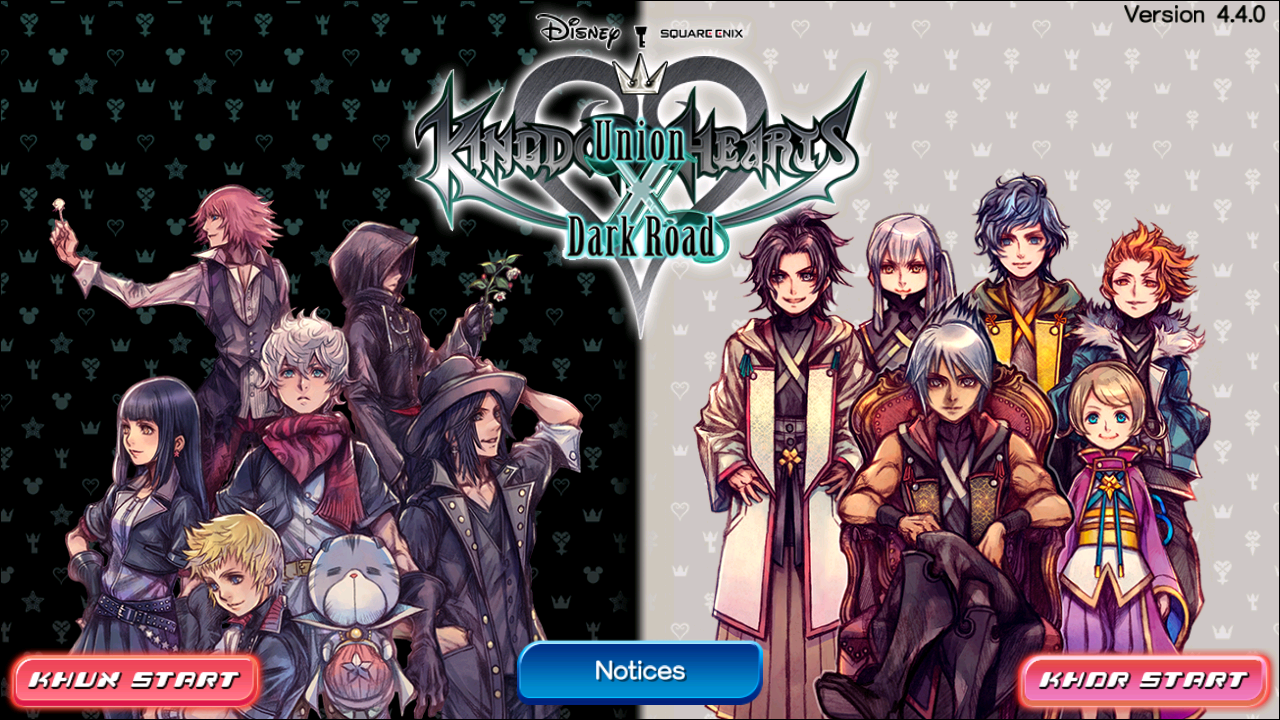
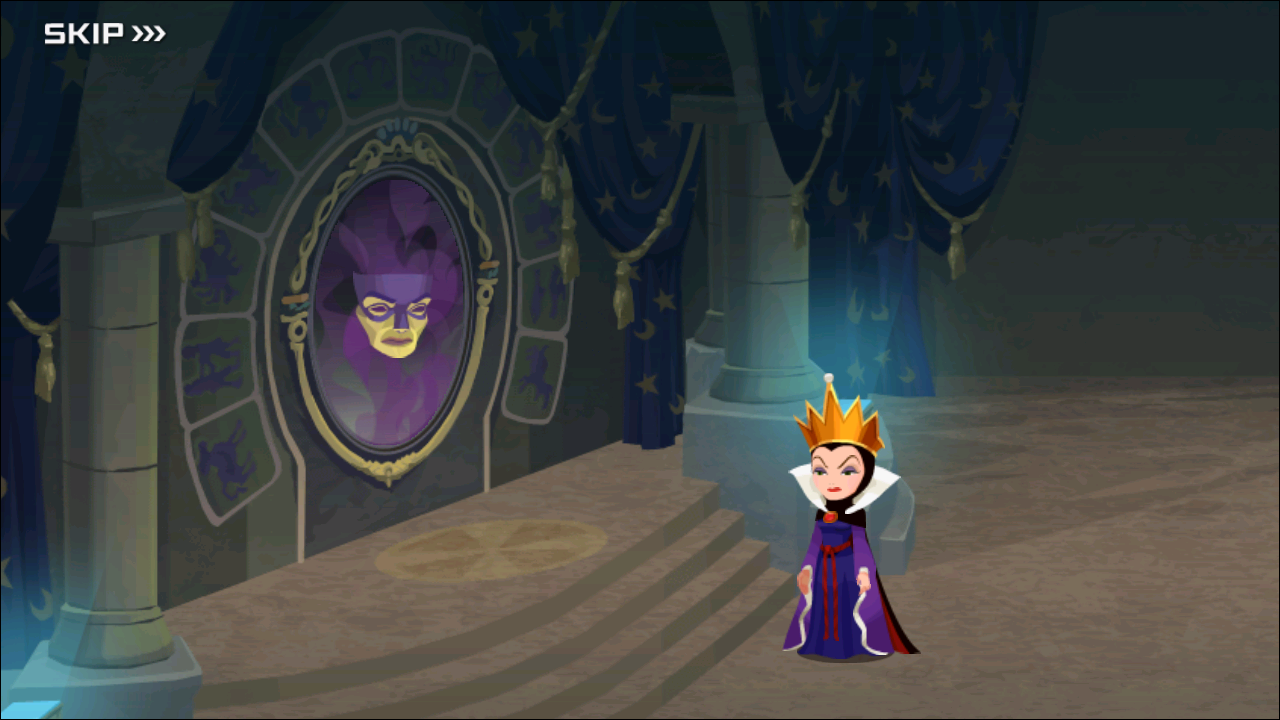


There are plenty of reasons to be weary of Kingdom Hearts χ (pronounced “chi”), from the chibi art style to the free-to-play structure built into a traditional console game. When the game was announced for North America in 2016, it’s easy to say fan reaction was mixed. The decision to focus on a spin-off game with in-app transactions instead of focusing time and energy on the then-long-in-the-works game wasn’t without its detractors, to say the least. Though the game had received relatively-positive reviews upon its release, plenty of fans—including myself—had decided to avoid the game while waiting for the (finally available) third mainline entry in the saga.

But in 2017, the game received a major update—and a name change, to Kingdom Hearts Union Cross. The famed Japanese developer has actually done a pretty decent job on their free-to-play games on mobile as of late, and I hoped to find Kingdom Hearts in a similar fashion—positive, with some deeper gameplay than typically seen on mobile devices. Overall, while I can’t say Kingdom Hearts Union Cross (Kingdom Hearts UC, from here on out) is a revelation, the game is far better than I’d initially expected. While it isn’t nearly as deep in terms of gameplay and mechanics as any number of the series’ mainline releases, I did enjoy my time testing the game enough not to uninstall it from my tablet—and if that isn’t a strong recommend, I don’t know what is. Kingdom Hearts UC is the perfect game for lapsed Kingdom Hearts fans, even if the game doesn’t mend the ridiculous plotline in-game.
The game opens as you design your own character using a pretty-limited character generator (there are only three choices of hairstyles for characters), upon which you wake up in Daybreak Town, only to find yourself attacked by Heartless, the series’ most-infamous enemies. You’re given your very own keyblade (the weapon of choice in the KH universe), and you go at it. Combat is performed quite differently than it is in the console titles. As this is a 2D point-and-click adventure, you have a rotating disk of cards in your lower-left hand corner of the screen, which allows you to summon the powers and abilities of characters like Donald, Goofy, and Mickey. You tap on enemies to activate the effect of these powers, and you slash to perform a group attack to destroy enemies faster. You can also supercharge your abilities, and dragging them from the wheel to your battlefield will activate powerful magic attacks. It’s all pretty standard mobile-RPG stuff, but with a certain Kingdom Hearts-twist to it.
When you aren’t on a mission, you can level up, change your loadout, and affect your stats at a basic level. Kingdom Hearts UC might feel basic throughout its general gameplay, but the actual level and inventory system is anything but. In an apparent flashback to the RPG inventory menu systems of Square in the ’90s, the whole thing feels overly complicated and technical for what you’re truly changing. Your character has menus-on-menus of options, medal layouts, and more, and it’s a bit overwhelming when you first begin the game. Luckily, Square Enix has done a decent-enough job in making the menu system organize itself for younger players who may have difficulty in understanding or comprehending what the game is trying to do here.

In terms of presentation, while I didn’t find myself loving Square Enix’s Chibi-inspired 2D animated graphics, plenty of Kingdom Hearts fans will find these not just serviceable, but adorable and good-looking in their own right. The game controls well, though we’d love to see some additional controller support somewhere down the line. Square would have to change how combat works in action, but the medal-based battle system doesn’t necessarily require a touchscreen to be used. After all, the game was originally created to be played in a browser—adding support for a physical controller can’t be far off of a mouse and keyboard combination.
The Union Cross update didn’t change the core game or storyline, but it did have one big effect: the game can now be played in multiplayer, in groups or clans of six players at once as a co-op team. This game mode doesn’t utilize exactly the same missions as everything else, but they are promising to add additional content throughout 2017. Otherwise, the game is mostly as it was previously, just with an entire new name.
One final note for Kingdom Hearts fans: the plotline in Kingdom Hearts UC is canon, and even serves as a prequel to everything in the series, including Kingdom Hearts III. With the Darkseeker Saga officially over, any fan who has finished the most-recent game will know that the content contained in Union Cross is only going to get more important to the series moving forward.
Overall, Kingdom Hearts Union Cross is a good adaptation of a great game series to mobile platforms, presenting players with dozens of options on how to play, including a brand new co-op mode. While I couldn’t quite fall in love with the game’s graphics, I was pleasantly surprised on how well the game took to mobile platforms. Even as the game began simple enough, I found myself constantly playing just “one more mission,” wanting to continue down the path of upgrades and unlocks. There was never any pressure to spend a cent, either—always a positive for free to play games such as this. For those Kingdom Hearts fans who aren’t quite finished with the series after III, this can be a great time-waster prior to the release of the upcoming DLC.
Compatible With
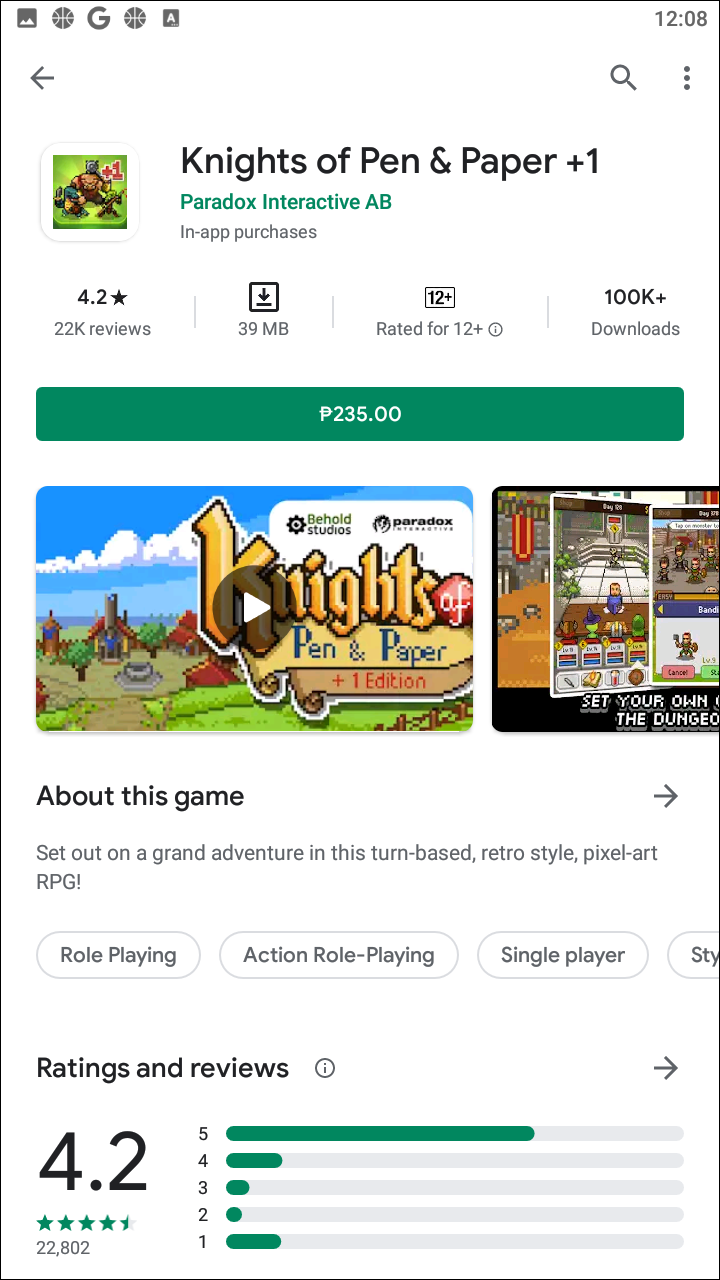

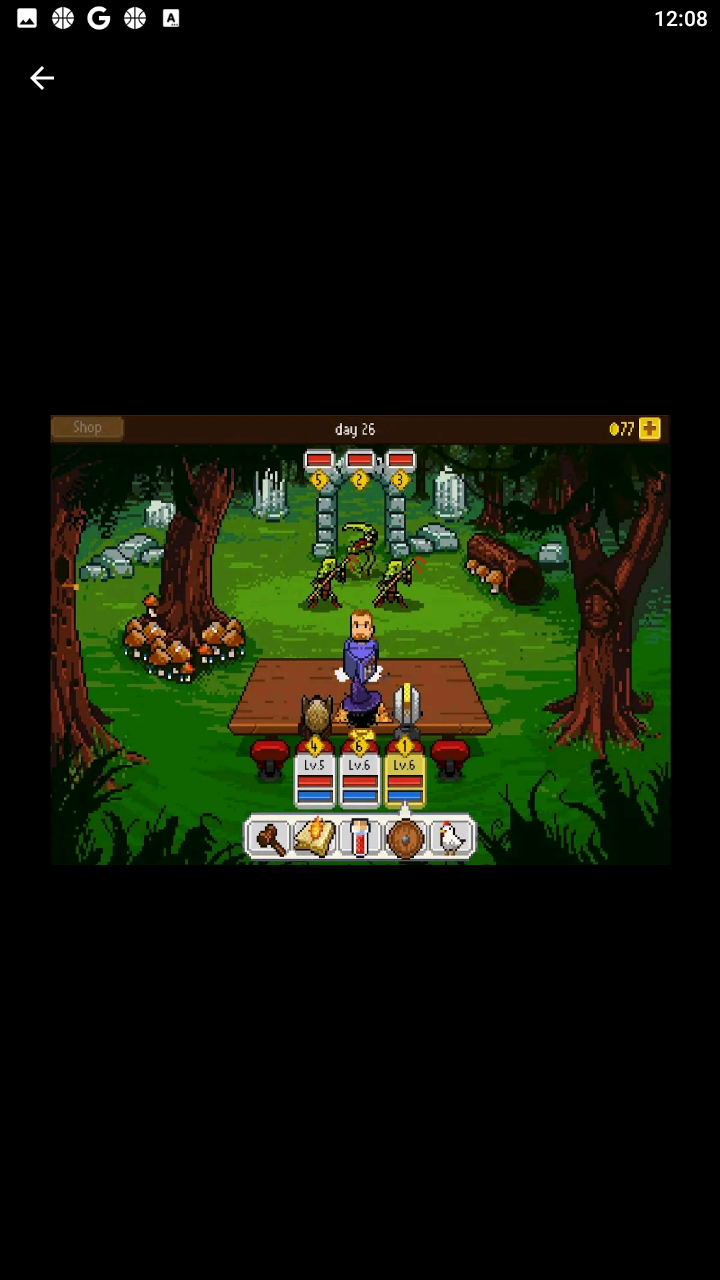

Knights of Pen and Paper is a turn-based meta-RPG, a game about a game of, essentially, Dungeons and Dragons. You play not as the hero or heroine of a fantasy world, but as the party members of a local campaign of tabletop gaming. Inside the game’s universe, you aren’t the elf but a hipster playing an elf. Much like a traditional game of Dungeons and Dragons, this RPG starts out rather slow and uninteresting: the first town you visit literally called “Default Town,” while the first enemies you encounter including basic rats and soldiers. As you continue through the game, you’ll find far more inspired references, with the villages taking note from dozens of pop-culture landmarks. Though nothing in this world is meant to be taken too seriously, it becomes obvious that the dungeon master inside Knights of Pen and Paper is a huge nerd.

Since Knights isn’t a traditional turn-based RPG, controlling the game is a bit more unusual than any other RPG you’re likely to find on the Play Store. No matter where you are, you’ll always see your party sat at a table, five chairs facing their bearded, retro-stylized dungeon master. Surrounding the table is the fantasy land you find your characters inside, giving the game a feeling of fantastical realism. Each of your characters have a level system, with HP and MP stats listed below their icons. You can have up to five characters in your party at once, each filling a seat. Adding characters uses coins, which we’ll touch on in a moment in this review. Clicking on a character will present you with their specific stats, skills, and items, like an in-game character sheet. For example, looking at my nerd paladin shows his passive abilities, as well as the skills he’s currently equipped.
While this may seem like a traditional party system similar to RPGs like older Final Fantasy games, you also control your dungeon master, adding a whole new element to the game. By clicking on your DM, you gain access to a menu of options, including the ability to design a quest or spawn random encounters. Creating a quest involves selecting an option (slay, rescue, collect, etc.) and the corresponding object or person (rat, merchant, blood gemstone, etc). Once the quest has been built for your team, the DM will provide you with in-game story details, imagining non-playable characters inside the game. “I need some items from the Den of Devil,” says an elderly townsfolk, played in-game by the dungeon master sitting at the table. “Could you head over there and provide me with some of them?” You follow out your quest, completing tasks and battling enemies for loot.
The battle system largely works in a similar fashion to actual D&D fights. Each battle begins with a roll of initiative, marked on each player character and enemy with a yellow number. For three player characters and two enemies, for example, my characters were given 3, 5, and 2, meaning they went third, fifth, and second in battle, respectively. You take turns, attacking with either melee hits or magic attacks. Later on in the game, you can upgrade your weapons, skills, and magic to hit harder and faster. To perform basic attacks, you tap on the enemy you want to hit, or you can use the melee button below your character. To perform magic, if your character has the ability, you press the magic icon and select both your spell and the targeted enemy. You can also defend or run from battle, achieved by a literal roll of a D20. Once you defeat your enemy(s), you collect loot and continue through your premade quest.
Like the rest of the game, the leveling system works like a Dungeons and Dragons-esque character sheet. Each time one of your characters levels up, they gain the ability to add a new skill to their in-game persona. As the game goes on, you can also level up these stats to create more powerful characters and spells throughout the world. Each battle presents global XP for each character, assuming they don’t battle, so the system works more like Final Fantasy VI than early Pokemon games. If you need to heal after a battle, you can use your DM menu to camp out and sleep until your characters have healed. The game features a built-in day system, so time does pass in the world as you rest.
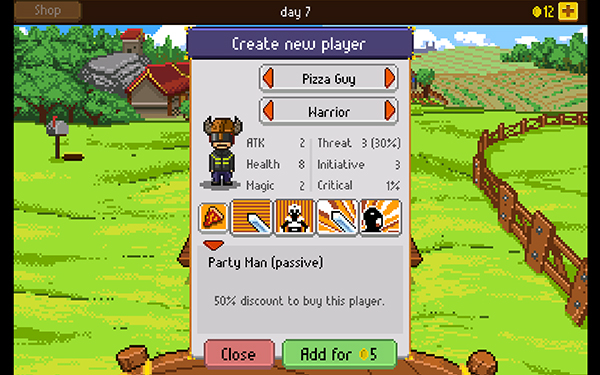
While I found Knights of Pen and Paper to be well-designed overall, it did take me some time to get used to the game’s look and feel. The pixel art design harkens back to SNES and other 16-bit games, and the designs of the characters and worlds fit each other perfectly, making the entire game feel like a labor of love for both pop-culture geekery and 90’s Square RPGs. The graphics, text, and music all provide a retro-feel to the entire game world, establishing a cohesive design that works well, even if it does come off as a bit derivative. The meta-narrative around the tabletop game is interesting, and with all of the winks and nods to other beloved properties, it’s hard not to be won over by the game. I also found the overall design of the map to be brilliant—keeping the DM not just on-screen at all times, but surrounded by enemies he’s playing in “real life” makes the game feel more like an actual session of tabletop gaming than nearly any other video game I’ve played.
There is a single aspect of this game that didn’t win me over, and unfortunately, it’s a big one: money. This is a paid purchase, a full-priced title at $4.99 that uses an in-game currency that is purchased with real money. Coins are required to resurrect characters, to travel to new towns, and to add new players to your team, making them vital for nearly everything you would want to do in this game. You do gain coins from battle, as well as finishing quests, but they’re paid out in slow amounts that don’t allow you to customize and add characters without a serious amount of grinding. For a game that runs you $4.99—not cheap, by mobile app standards—I can’t approve of in-app purchases that aren’t purely cosmetic or new expansions.
Money aside, Knights of Pen and Paper is a great turn-based RPG for fans of older Final Fantasy games, or those who really love pop culture and meta-referential humor. Knights isn’t without its fair share of problems, but it’s also funny, enjoyable, and great for some relaxing, unrushed RPG action. If some of the games on this list are a bit too self-serious for you, Knights of Pen and Paper might be perfect—if you can get over that terrible in-app purchase system, of course. If you want some more games in a similar vein, Knights of Pen and Paper 2 is available for free with in-app purchases on the Play Store, though it’s worth noting that game wasn’t as critically well-received upon release, in part due to a new development team working on that project. The devs behind this game also released Galaxy of Pen and Paper, a space-themed RPG in the same vein, available on the Play Store for $4.99 without any ads or in-app purchases.
Compatible With

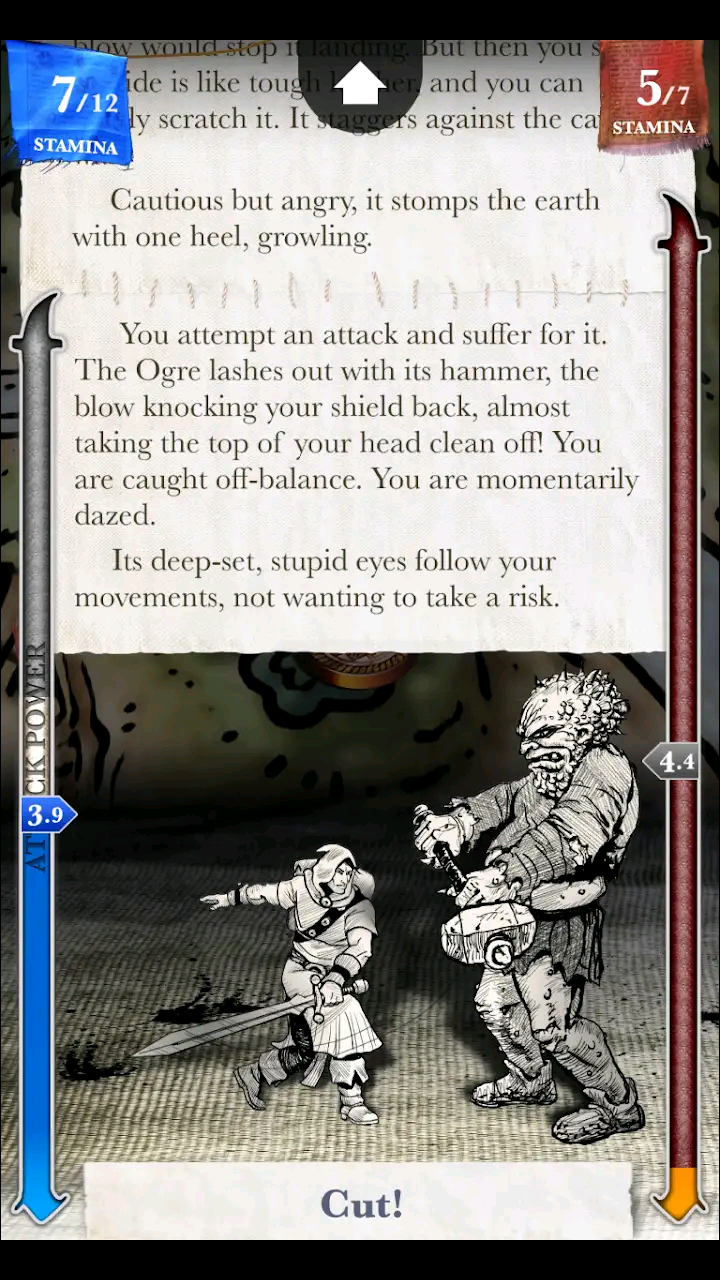


If, like me, you grew up as an “indoor kid,” you loved the library. So many great opportunities to find new books, interesting magazines, favorite authors, and so much more. Not every book had to be the next Gatsby—sometimes a fun read was just a fun read, and Choose Your Own Adventure novels were some of the most fun you could have. Reading these book series were like playing a video game without the screen. As you made your choices throughout the novel, you’d flip to the corresponding page listed in the book, and continue reading from there. Sometimes you’d meet a gruesome end; occasionally, you’d narrowly avoid peril and continue your adventure. Over the past few decades, these books have, more or less, been phased out, co-opted by video games, movies, Netflix, and phone apps. That said, Steve Jackson’s Sorcery! series happens to be one of the best recreations of those books I’ve seen in the 2000s, combining CYOA gameplay with tabletop-like combat.
Steve Jackson’s Sorcery! series (or Sorcery! for short) is actually based on a four-part adventure gamebook of the same name published between 1983 and 1985. Sorcery! the app plays exactly like a cross between a video game and a novel. The game opens with actual text, presented as you’d read an eBook on your tablet or phone. Below the excerpts of text—rather eloquent writing, I may add—that describe the actions and setting of the game, you’ll see the map of the world, complete with a chess-like figure that you drag around the storybook-like setting to objectives and markers on the map. The game presents you with markers on your map, displaying where you can and can’t go. Once you arrive at a marker, the story will continue unfolding in text-format, describing the on-goings of your character and the surrounding NPCs. For example, when you go to test your battle skills, you speak with the master who’s about to teach you everything you need to know. The story also gives you dialogue options as you speak, similar to modern RPGs like The Witcher 3 or Persona 5.

One of the major benefits to expanding a CYOA story to a mobile device is the ability to add combat, while at the same time, staying true to the novel-based genre. Yes, Sorcery! has combat, and it’s combat like I’ve never seen before. You’ll see both your own unnamed character, on a quest to search for the legendary “Crown of Kings” for your native village; on the right, you’ll see your combative enemy. Above the battlefield, the novel-text continues, spelling out the actions of both yourself and your character. Both the text and the illustrations hint at what the enemy is about to do: strike hard, soft, or defend.
Your job is to slide your character to an appropriate stance, or keep defending. By sliding your character towards your enemy, you raise your attack power from 0, all the way to a maximum of 9. A value of 0 is a defensive stance; a value of 9 is a maximum attack. All you have to do to damage your opponent is set th vb is attack power to a higher value than their attack power. For example, if you attack at 5.8, and they attack at 2.9, they take damage. If the shoe’s on the other foot, however, and your character’s attack is lower than the opponent’s, you’ll take damage, lowering your stamina. If you attack an opponent whose attack power value is 0, you’ll damage them for one hit; likewise for your own defends. The battle system does a great job of “game-ifying” your attacks while also maintaining the book-like feel of Sorcery!.
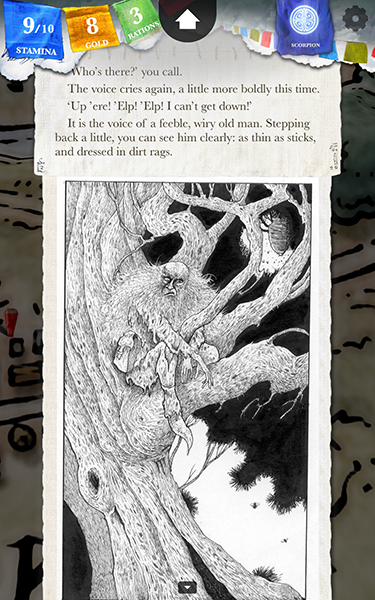
As for the general presentation, the game goes above and beyond. The illustrations, both in and out of battle in this game, are something truly to marvel at. The art style is traditional fantasy, spawning from 70s and 80s tabletop RPGs, and it looks great. If you’re a fan of classic fantasy, you’ll be in heaven while playing. There isn’t a ton of music, but when it plays, it’s absolutely incredible. Unfortunately, it really doesn’t play often enough to truly leave the mark it deserves, typically playing while the menu interface is open on your display. I imagine this is to help players focus on the reading material at hand, but it still left me wanting more. Performance was perfect on my Shield Tablet, and while I do recommend playing this game on larger-screened devices if you can, a smartphone-sized device will make do. As I mentioned, the writing is phenomenal—certainly perfect for the nostalgia-based fantasy the game is bringing back.
Of all eight games on this list, Sorcery! is the one I’m most excited to return to playing. It combines the best of Choose Your Own Adventure Novels with gameplay elements from Dungeons and Dragons and some incredible visuals to make something that feels new and fresh, despite being a “port” of a book series from thirty years ago. As mentioned, Sorcery! is based on four separate gamebooks, and as of 2016, all four had been converted to games on both the Play Store and the App Store for iOS. I’ve been playing through the first of four, and as the story gets deeper and begins to grow and expand, I’m really excited to see where this all goes. Sorcery! is one of those games that seems like such an incredible, obvious idea, and yet, still retains magic every time you play it.
Compatible With


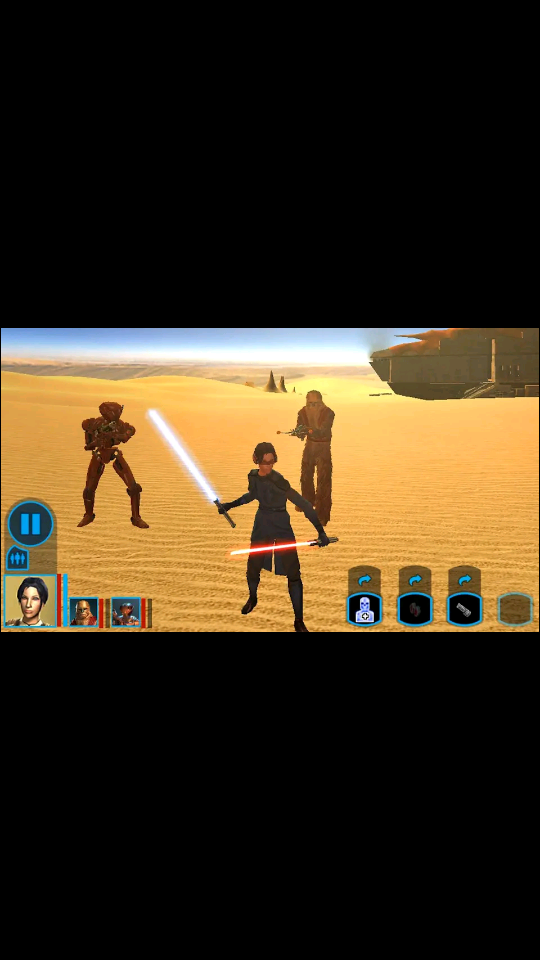

If you’ve been a lifelong fan of video games, you’ve probably heard of Knights of the Old Republic, or KOTOR for short. Considered one of the best western RPGs of all time by many fans of the genre, KOTOR was originally developed by BioWare, coming off the success of both Baldur’s Gate and Neverwinter Nights in the late 1990s and early 2000s. BioWare teamed up with LucasArts to create an RPG based on Star Wars, and they absolutely knocked it out of the park upon release in 2003. BioWare went onto be purchased by publisher EA, as well as to create Mass Effect and Dragon Age, the former of which was influenced heavily by KOTOR’s space-setting and alignment system. To many, KOTOR represents peak-BioWare, a game so perfect, many have asked for years for a proper third entry in the series.

Despite its general appearance as an action RPG, KOTOR is a turn-based 3D role-playing game, where you move your character around massive 3D areas, pausing gameplay to select your next action. I tested the game by using a Bluetooth controller synced to my Shield Tablet, and overall, I’d say this is the way to play. The game is definitely playable on touchscreen devices, with movement achieved by tapping and holding sections of the screen to move your character around the environment. For example, holding the top part of the display moves your character straight, while holding the right part of the screen moves him or her to the right. Because of this, I wouldn’t recommend playing on a device smaller than 6 inches in size—not difficult in today’s phone market. This is a detailed port, a game originally designed for either computer monitors or televisions, and it’d be incredibly difficult to see that detail on screens lower than 6 inches in diameter. I also recommend playing the game in full 1080p—the game looked fantastic on my Shield Tablet.
As mentioned, if you have a Bluetooth controller that supports Android, that is the way to play. Moving your character around is done with the controller; when you enter combat, the game pauses itself as you select your weapon loadout and your actions. Combat is turn-based; the enemy will strike, followed by a strike back at you. Your character will attempt to dodge attacks, occasionally causing the enemy to miss. You can also have companions in your party, who also engage in combat, with you gaining the choice to either manually manage their actions or let the AI take over. It’s up to you what you want to do; personally, I prefer having total control over my party in turn-based RPGs, but you may be able to adjust to unpredictable actions pursued by your teammates’ AI.
Knights isn’t a remake of the classic game, but a port, so it isn’t surprising that the game doesn’t look incredible when held up to console standards in 2017. Though the game is sharper and upscaled compared to its original 2003 release, along with a widescreen move, you should absolutely expect some jagged polys and less-than-attractive character models. Still, for a game that’s nearly fifteen years old now, it doesn’t look terrible compared to games from that same time period. I’d love to see KOTOR get a full remake eventually, both on consoles and mobile platforms, but for the time being, this is what we have. EA owns both BioWare and the Star Wars license for games, so theoretically it is possible, but for now, EA’s offered nothing but free to play mobile games on iOS and Android.
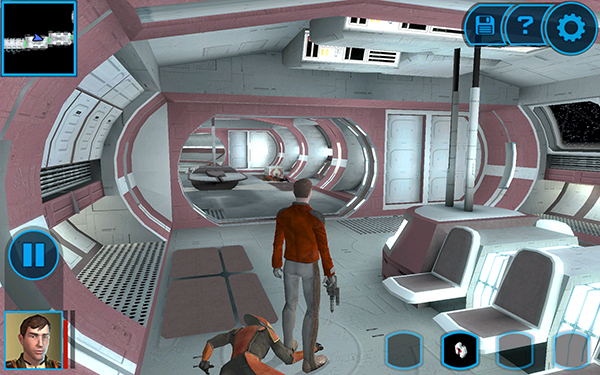
If you haven’t played KOTOR previously through its years of rereleases and don’t know what it’s about, here’s what you need to know. Knights takes place 4,000 years before the films and tasks you with traveling the galaxy, battling Sith and defending the Republic from the evil Darth Malak. Eventually, you train to be a Jedi, and the choices you make throughout the game—everything from your dialogue choices to major plot actions—will change whether you join the Jedi, and their quest for peace and light, or the Sith, and their quest for evil and darkness. It’s not the most complicated plot in the world—KOTOR II, the Obsidian-developed sequel, delved further into dark plot lines—but there’s plenty of complex decisions you’re forced to make throughout your adventures.
Don’t let the age of KOTOR freak you out—this is a great port, with a few flaws in terms of graphic quality and also in terms of occasional game-breaking bugs (also ported over from the original game). At only $9.99, you’re looking at 30-40 hours of gameplay ahead of you, battling Sith masters, droids, and warriors alike. Overall, KOTOR might seem expensive for a mobile game, but the quality of what you’re getting makes it worth every cent.
Compatible With
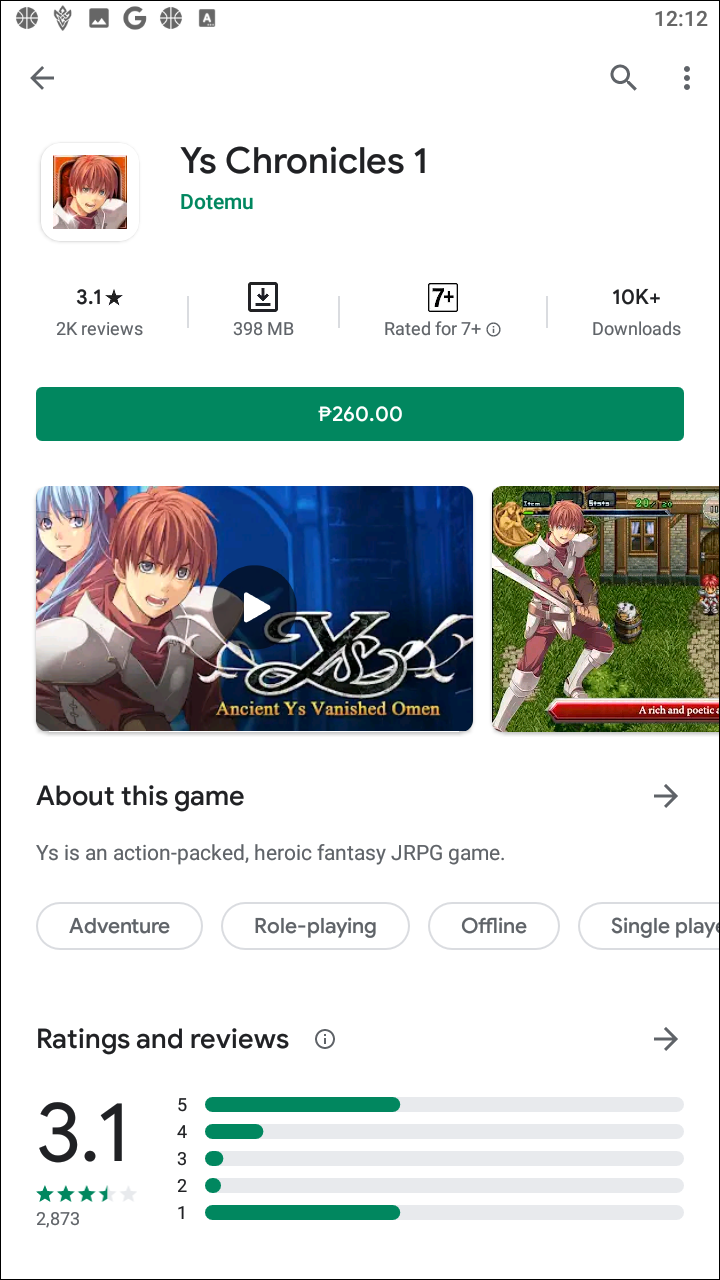


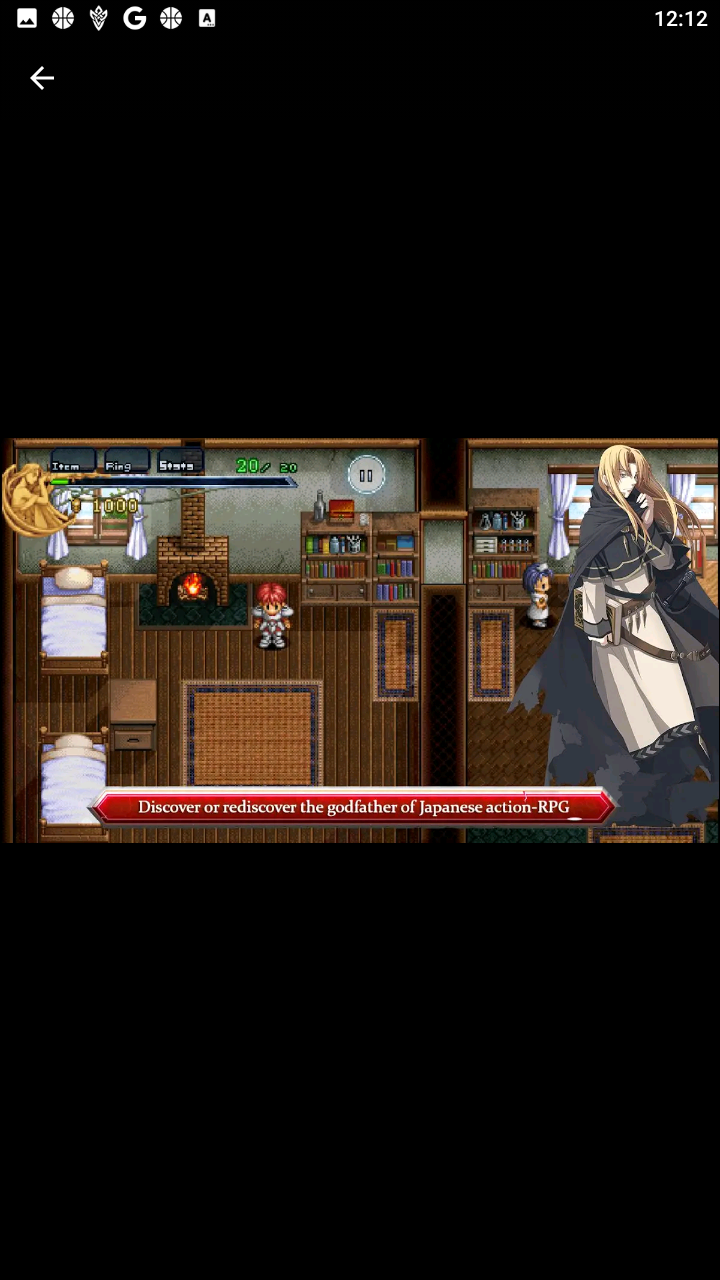
Having never played a Ys game (pronounced ee-ce, like fleece without the ‘fl’), I was surprised to learn of the series’ long-running history, dating back to 1987 with the release of the first Ys game in Japan. The first two titles have been ported and remade for dozens of systems and consoles over the past three decades, eventually made their way to Android and iOS in 2015 and 2016 as Ys Chronicles I and II. New to the series, I opted to just check out the first title—and was shocked by how much I enjoyed the game, and how modern it felt compared to other titles remade from 30 year old games.
Ys is an action JRPG series that, unfortunately, has flown under the radar compared to many of its contemporaries. Where it’s easy to find players and gamers familiar with Pokemon, Final Fantasy, or even the Shin Megami Tensei series that rose to popularity with the spinoff Persona series, you’ll be lucky to find someone who even knows how to pronounce Ys correctly (though to be fair, it’s divisive even among fans). The series is the crown jewel of Japanese developer Falcom, also known for the critically acclaimed Legend of Heroes series. Originally, only three Ys titles were every published in English, all released on various PCs and consoles throughout the early 1990s. The next title to be localized in English for a North American release wasn’t complete until the mid-2000s, thirteen years later. All of this is to say, Ys has remained a niche series in the years since it first launched in 1987, and is likely to stay that way.

That said, the fanbase has definitely grown over the past decade. With the diversification of our pop culture since the rise of the internet, Ys has seen a cult-based following develop around the game, specifically with the release of Ys I and II Complete. That collection was developed for Windows and later ported to the PSP, where a base of JRPG fans fell in love with the game. Since then, Ys releases have picked up steam in the United states, localized by XSEED, and the games have grown a positive reputation among fans of Japanese games. All of this is to say, Ys has quite a background, and I’d be lying if I said I wasn’t a bit nervous about taking on this series for the first time. Games from the late 80s—especially RPGs like Ys—haven’t traditionally aged well when compared to more-modern entries.
But instead finding an overly-complex or boring RPG, I found Ys I to be an excellent remake, colorful, enjoyable to play, and featuring some fantastic music. The game’s relatively easy to get into, with some excellent, vibrant pixel art luring you deeper into the lively, albeit small world. Everything about this game’s presentation hits the mark right off the bat, and after a short cutscene and some unskippable dialogue, Adol hopes out of bed, ready to move through the world. I lightly tested the touchscreen controls on my Shield Tablet, and they seemed…fine. The game uses the popular virtual joystick option, allowing you to command Adol around the world map by pressing your thumb down and sliding in a direction. Personally, I found the game controlled far better through the use of a Bluetooth controller. Similar to my experience with KOTOR, once my controller was synced with my tablet through standard Bluetooth settings, I was good to go, without having to do any mapping or additional setup.
As far as gameplay goes, Ys is an action-RPG, and in researching the game, I found more than one reference to Zelda. I wouldn’t say that’s entirely off-mark, but Ys focuses more on action and story than the original Zelda games, which obviously feature a combination of fighting and puzzles. In Ys, you run around, talking to various townsfolk (and you’ll want to talk to everyone—there’s a diary of everyone you talk to, and any completionists out there will want to make sure they get it right), gathering story details and quests. There’s also a helpful “hint” function, if you truly can’t figure out what to do next, although you still have to find the character you’re pushed towards. Once you get a sword, you’re free to leave your hometown and begin venturing through the world—which, of course, leads you into combat.
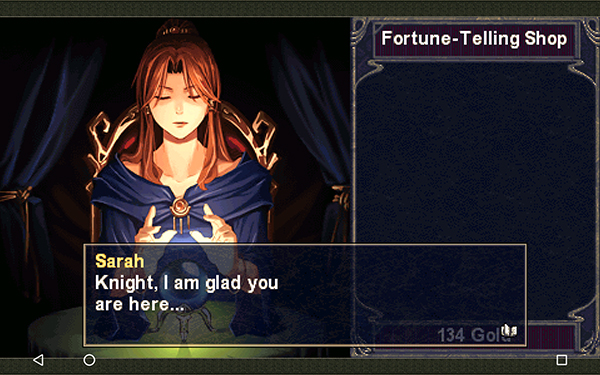
Combat in this game is unlike anything else I’ve ever seen in an action-RPG. It isn’t turn-based, like Final Fantasy, but it isn’t traditionally action-based, like the aforementioned Zelda. Instead, Ys uses what’s called a “bump” system, and it’s exactly what it sounds like: to control Adol during combat, you repeatedly knock yourself into enemies to attack. No button presses, no sword swings. You run into characters, and Adol takes control from there. The key of this system is simple, but hard to master: hit enemies off-center, instead of dead-center, to avoid taking damage. This means your aiming of Adol has to be dead-straight on in order to not take hits or damage from more-powerful enemies as the game progresses. One key that helps, at least early on: holding down A on a controller will slow down Adol from a run to a walk, allowing you to more accurately damage enemies. You will die once or twice before you get a hold of the system Ys Chronicles uses, but once you do, it feels really good—and translates well to a mobile game.
Unfortunately, translating also happens to be the worst part of Ys. The game was ported to Android and iOS by DotEMU and, if forum posts online are correct, it seems the gaming company took it upon themselves to retranslate the entire game from Japanese to English, instead of using an already-existing translation of the game from the PSP port a decade ago. I have no idea why DotEMU decided to do this, outside of a potential rights issue, but it leaves the translation very literal, often leading to broken English and misspelled character names in the game. Some sentences are so unreadable it leaves the game’s story difficult to follow. Thankfully, that’s really the only weak point of the port, and what is lost in translation is more than made up for it in the awesome, metal-like battle music. Seriously, listen to this music that plays during your first battle encounters. That track alone is amazing, but there’s plenty of great music to go around in this game. I’ve been jamming to the OST to this game for the past few days, and I absolutely love it.
Overall, Ys Chronicles I is a surprisingly great classic action-RPG, with a unique battle system, an awesome soundtrack, and controller support built-in from the get-go. I had a blast playing through the first few chapters of the game, and I’m really excited to jump back in and pick up where I left off—not to mention the entire sequel that picks up right at the end of Ys I. If you’re a big fan of JRPG series, and like me, you’ve never checked out Ys, grabbing both games is a must. They’re both excellent titles, and I’d love to see some more ports in the future.
If you don’t see an app that should be here, let us know what it is